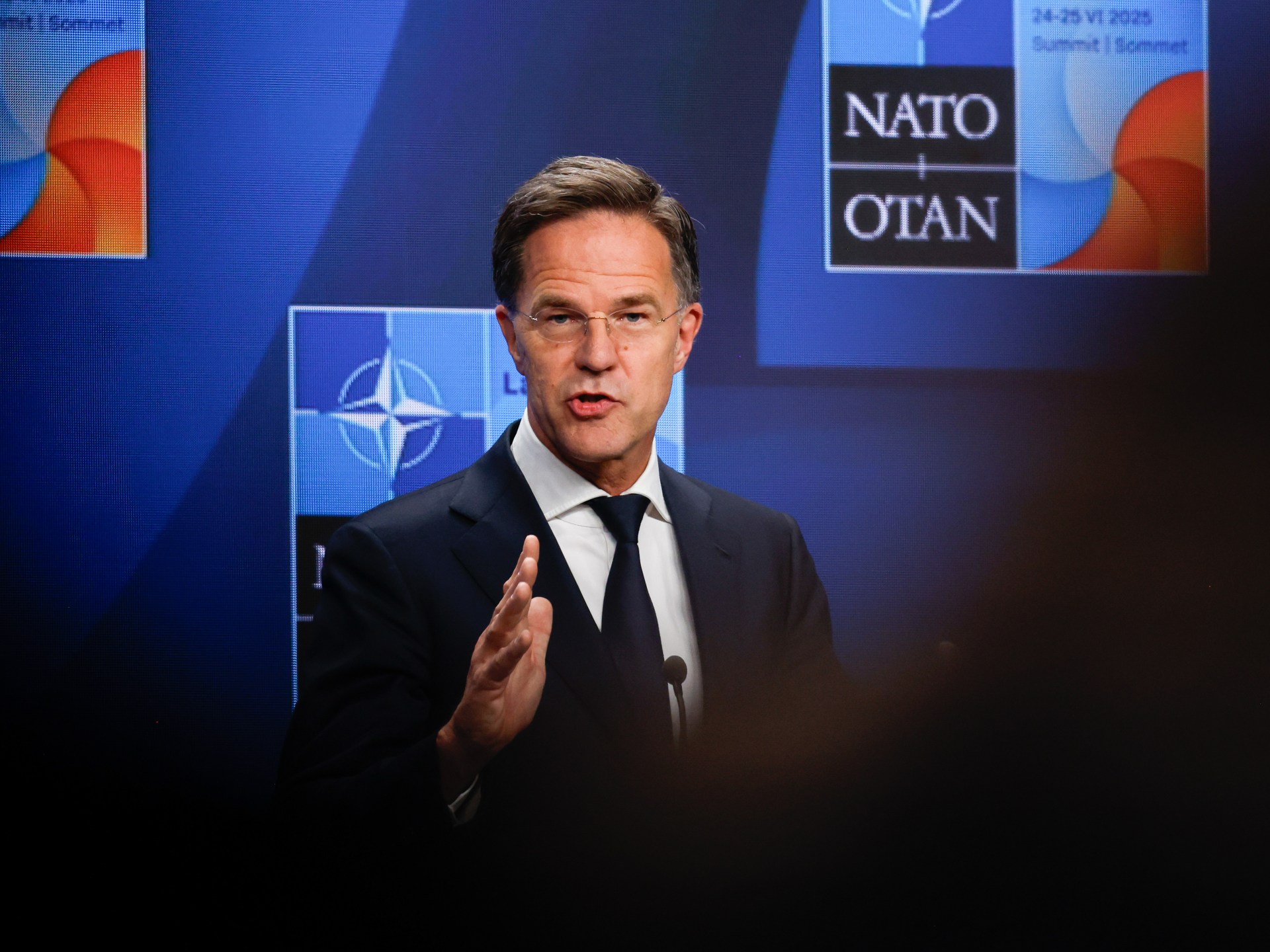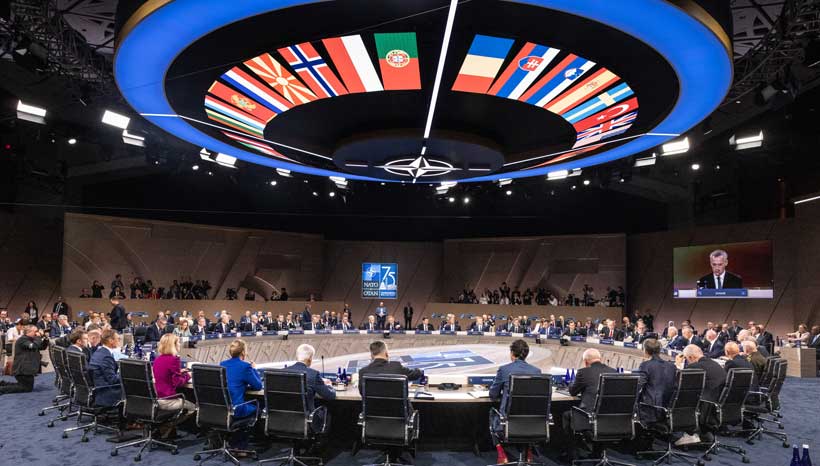NATO’s 5 percent spending pledge is a threat to people and the planet | NATO
NATO’s leaders agreed this week to invest 5 percent of their countries’ gross domestic product (GDP) on “core defence requirements as well as defence and security-related spending by 2035”. NATO Secretary-General Mark Rutte called it a “quantum leap” in spending that would guarantee “freedom and security” for the military alliance’s one billion people. It certainly is historic in terms of military escalation, but will it deliver security – and if so, for whom?
The headline demand for 5 percent GDP spending has been so loud, it’s easy to forget that for a long time, many NATO members considered the previous 2 percent goal either unachievable or unimportant. NATO first committed to its 2 percent GDP goal in 2002, but by 2021, only six of its members had achieved it. Yet three years later, 23 members had met the goal and all 32 are expected to comply by the end of 2025.
This week, NATO has committed to more than doubling its spending to 5 percent of GDP. This will be partly met through creative accounting and reflects a desire to trumpet a big number to satisfy a petulant President Trump. The 5 percent headline includes 1.5 percent spent on military-related infrastructure, which could be broadly defined to include civilian expenditure. Even so, it reflects a huge escalation of military expenditure over the next decade from an already very high level.
Last year, NATO spent $1.5 trillion on the military – more than half of global military spending. If members comply with the core 3.5 percent target by 2030, that would mean a total of $13.4 trillion in military expenditure. It’s an impossible figure to grasp, but if you stacked it in one-dollar bills, you could make almost four piles that reach the moon. It could also be distributed as a one-off cash bonus of $1,674 to every person on the planet.
In reality, the money will be diverted – most of all from social and environmental spending – even though 30 percent of Europeans report difficulty in making ends meet and climate scientists warn that we have two years left to keep temperature increases below the international target of 1.5 degrees Celsius (34.7 degrees Fahrenheit).
Spanish Prime Minister Pedro Sanchez, who fought for a partial exemption from the 5 percent goal, was the most honest about this costly trade-off: “If we had accepted 5 percent, Spain would have to spend by 2035 an extra 300 billion euros on defence. Where would it come from? From cuts in health and education.”
Social and environmental spending is already on the chopping block. In February, the United Kingdom announced it would reduce its aid budget to 0.3 percent of GDP to pay for military spending increases – a year after it won an election committing to increase foreign aid. Belgium, the Netherlands and France followed suit, announcing aid cuts of 25 to 37 percent. The United States, under Trump, has decimated its overseas aid and climate programmes and reduced healthcare funding while proposing a record $1 trillion expenditure on the Pentagon.
Europe is falling far behind on its own environmental and social goals, with its primary funding vehicle, the Recovery and Resilience Facility (RRF), expiring in 2026. The European Trade Union Confederation (ETUC) concludes that most European NATO members will be unable to meet the 3.5 percent NATO target without cutting budgets, raising taxes or changing fiscal rules.
NATO’s spending spree will not only divert money – it will worsen the climate crisis. As one of the world’s biggest carbon polluters, it is investing in more gas-guzzling jets, tanks and missiles. Military emissions are notoriously hard to track due to limited data, but one report estimates that 3.5 percent of GDP spending would lead to 2,330 million metric tonnes of greenhouse gases by 2030 – roughly the same as the combined annual emissions of Brazil and Japan.
NATO’s justification is that increased investment is needed to confront the threats of “Russia” and “terrorism”. Yet there is no rationale behind the 5 percent target or details on why threats to NATO have so drastically increased. Nor is there self-examination on how NATO’s actions partly set the stage for Russia’s invasion of Ukraine. Russia has increased military spending, but it still spends 10 times less than NATO. Nor could it catch up militarily with NATO’s 32-strong alliance, given its economy: $2 trillion in 2024 (nominal GDP), compared with $26 trillion for non-US NATO countries and $29 trillion for the US alone. As for “terrorism”, the idea that NATO’s increased spending could deter it ignores the failures of the “War on Terror”, where NATO interventions in Afghanistan and Libya prompted instability and fighter recruitment.
The security NATO seems most concerned with is that of its arms firms. Long before Trump’s pressure, arms firms have pushed for higher European military spending through lobbying groups like the AeroSpace and Defence Industries Association of Europe (ASD). They have successfully made military security an overriding European Union objective, winning ever more public money for research and industry support. Now they are reaping the rewards with booming revenues and profits. Before the NATO summit, BlackRock released an investment report celebrating the arms industry as a “dynamic growth industry” and a “mega force” that will drive investment trends in the coming years.
NATO’s idea of security diverts money from social needs, worsens the climate crisis, rewards arms firms profiting from global conflict, and chooses war over diplomacy. Its bellicose stance in The Hague this week makes it one of the greatest threats to global security – even to life on this planet. It is up to the peoples of NATO countries to reject this deadly path and reclaim security based on cooperation, justice and peace.
The views expressed in this article are the author’s own and do not necessarily reflect Al Jazeera’s editorial stance.


